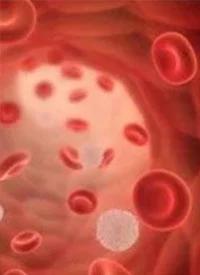MPL Mutations Linked to Increased Risk of Myelofibrosis Transformation in Essential Thrombocythemia
The presence of MPL mutations in patients with essential thrombocythemia was found to be associated with an increased risk of myelofibrotic transformation.

The presence of MPL mutations in patients with essential thrombocythemia (ET) was found to be associated with an increased risk of myelofibrotic transformation, according to findings from a retrospective analysis presented during the 2020 European Hematology Association Annual Congress.
Additionally, MPL mutations, along with palpable splenomegaly and anemia, were identified as useful risk stratification tools in estimating post-ET myelofibrotic transformation.
“Based on these results, MPL mutations appear to provide certain poor prognostic features to ET patients. However, further collaborative studies would be necessary in the future to elucidate this aspect,” said Rosa Collado, MD, of the Hematology Department at the Hospital General Universitario de Valencia in Valencia, Spain, in a statement to OncLive. “Finally, activating mutations outside exon 10 of MPL has been identified in triple-negative cases of ET. In this setting, we recommend the analysis of all coding exons of MPL to obtain the true incidence of the non-canonical mutations by Sanger or next generation sequencing techniques.”
Approximately 3% to 5% of patients with ET harbor MPL mutations, which disrupts the thrombopoietin receptor. Additionally, the clinical rationale for the analysis was based on the knowledge that patients with ET who experience thrombosis, leukemic transformation, or myelofibrotic progression have a significantly reduced life expectancy.
Of 174 patients enrolled in the retrospective study, 13 had MPL mutations. Moreover, 11 of these patients had MPL W515L mutations, 1 had an MPL W515K mutation, and 1 had an MPL W515R mutation. Additionally, 65% of patients had identifiable JAK2 mutations, 21% had CALR mutations, and 7% had triple-negative ET. The median follow-up was 70.5 months.
Baseline clinical and biological features were collected upon diagnosis, and patients underwent a multitude of molecular studies. First, patients’ genomic DNA was extracted from peripheral blood samples using QIAamp DNA blood mini kit (Qiacube, Qiagen). Then, JAK2 V617F (exon 4) and MPL W515 K/L/R exon 10 mutations were detected via ASO-PCR by 7500 Fast Real-Time PCR System. Finally, patients were screened for CALR exon 9 mutations by PCR fragments analysis with a fluorescently labelled forward primer.
Patients characteristics in the MPL-mutant cohort revealed that 84.6% of patients were younger than 60 years old and 84.6% were women (P = .093; .245, respectively). Patients had a median platelet count of 681 x 109 (range, 526 x 109 – 1400 x 109; P = .668), a median leukocyte count of 7.9 x 109 (range, 2.8 x 109 – 46.4 x 109; P = .199), and median hemoglobin of 13 g/dL (range, 10.8 – 17.4; P = .094).
The majority (76.9%) of patients with MPL-mutant ET had preexisting cardiovascular risk factors (CVRFs) such as a history of tobacco use, atrial hypertension, or diabetes mellitus (P = .730) compared with 72.5% of patients in the unmutated cohort (n = 161).
Additionally, in the unmutated cohort, 18.8% of patients had a history of thrombosis (P = .764), 9.4% had thrombosis after being diagnosed with ET (P = .248), 2.5% had blastic transformation (P = .564), 5% had fibrotic transformation (P = .881), 20% had splenomegaly (P = .227), and 9.4% had anemia (P = .840). In the MPL-mutant population, 15.4% had a history of thrombosis, 7.7% had fibrotic transformation, 7.7% had splenomegaly, and 7.7% had anemia. Also, 2 patients with MPL mutations had a high risk of myelofibrosis transformation post-ET (P <.001).
Baseline characteristics were also compared between patients with MPL mutations, JAK2 V617F mutations (n = 113), and CALR mutations (n = 36).
Over half (69%) of patients with JAK2 V617F mutations were younger than 60 years compared with 44% of patients with CALR mutations (P = .008). Other patient characteristics were generally similar between subgroups.
According to the analysis, there were no significant differences observed between patients with mutated or unmutated MPL with regard to overall survival (OS). Median OS was 278 months in the unmutated cohort and 160 months in the MPL-mutated cohort (log rank P = .92).
However, MPL- or JAK2 V617F–mutated patients had shorter OS compared with CALR-mutated patients. Median OS was 160 months in patients with MPL mutations, 161 in patients with JAK2 mutations, and 325 months in patients with CALR mutations (log rank P = .011).
Additionally, fibrosis-free survival was 29 months in patients with high-risk disease compared with not reached in the low- and intermediate-risk cohorts (log rank P <.001).
Reference:
Garcia-Serra R, Uribe M, Costa S, et al. Clinical significance of MPL mutations in essential thrombocythemia patients: risk assessment of myelofibrotic transformation. Presented at: 2020 European Hematology Association Congress; June 11-21, 2020; Virtual. Abstract EP1077.



